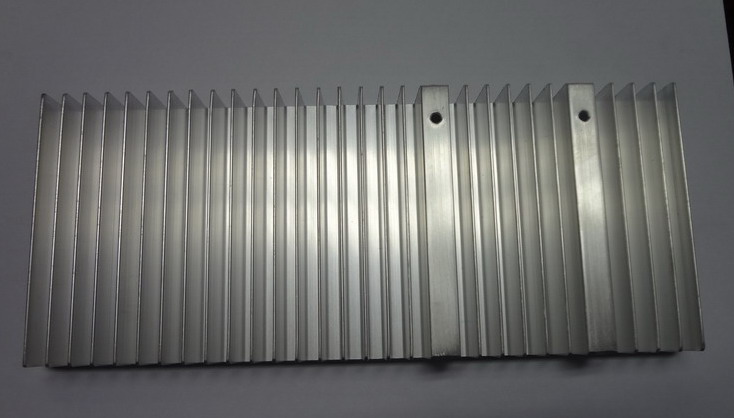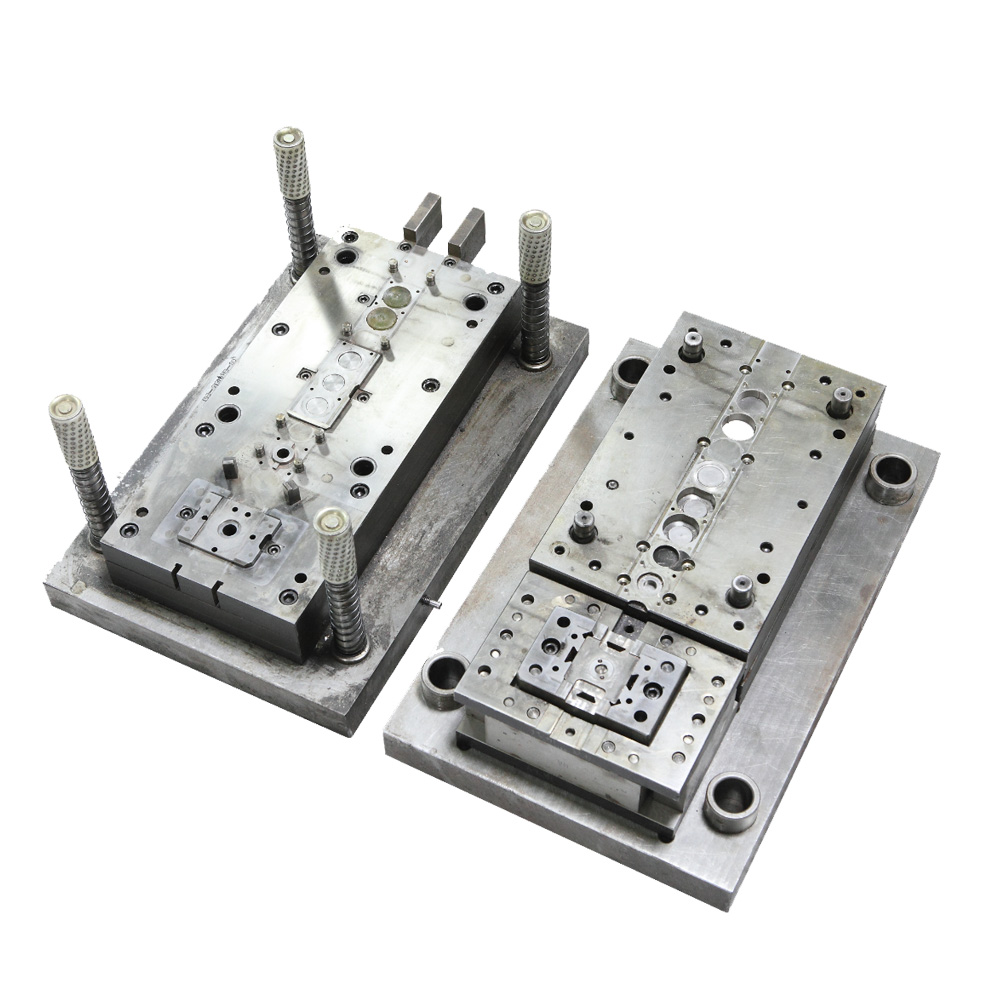In the manufacturing world, selecting the optimal manufacturing technique is a recurring challenge. With a myriad of processes available, it becomes crucial to align production processes with the project requirements and desired outcomes. Among these, progressive die stamping stands out as a method known for its efficiency and precision. This article provides an in-depth understanding of progressive die stamping, comparing it with other methods and discussing its benefits.
Stay tuned as we delve deeper into progressive die stamping and assess its merits in the following sections. Our journey starts from understanding the basics of progressive die and die stamping machine operations to exploring the intricacies of progressive stamping die and progressive die tooling. We’ll cover all this and more, providing you with comprehensive insights into this impactful manufacturing process.

Understanding Progressive Die Stamping
What is Progressive Die Stamping
Progressive die stamping is a metal forming process widely used in various industries due to its ability to produce high volumes of intricate parts with exceptional accuracy. It involves feeding a metal strip through a stamping press fitted with a series of stamping die stations. Each station performs a different action, such as punching, bending, coining, or cutting, resulting in a finished part at the end of the cycle. This process is facilitated by a progressive die, a specialized tool that holds and positions the metal strip as it moves through the press.
The stamping process begins with a coil of sheet metal fed into a stamping press. The progressive die mounted in the press has several stations, each designed to perform a specific action on the workpiece. The coil advances through the press, with each station performing its operation in a sequential manner. The process concludes with the ejection of the finished part at the final station, hence the term ‘progressive’.
Advantages of Progressive Die Stamping
Progressive die stamping offers numerous advantages, making it a preferred choice for many applications.
- Enhanced Production Pace: Progressive stamping is capable of producing parts at a high rate, which makes it suitable for large-volume productions.
- Minimal Waste Generation: This process is highly efficient, leading to minimal material wastage.
- Wider Design Possibilities: Progressive die stamping allows for the production of complex geometries and intricate designs that might be challenging with other methods.
- Increased Production Capabilities: Unlike some other stamping dies types, a progressive die can perform multiple operations in one pass, which significantly improves productivity.
- High Levels of Consistency: Progressive die stamping provides high precision and repeatability, ensuring each part produced is consistent with the last.
- Reduced Cost per Unit: Thanks to its speed and efficiency, progressive die stamping can reduce the cost per unit, especially for large production runs.
- Production of Precise Tolerances: This method is capable of maintaining tight tolerances, an essential aspect in industries like aerospace and medical where precision is paramount.
Application of Progressive Die Stamping
Progressive die stamping is used across a broad range of sectors due to its versatility and efficiency. From complex parts in automotive applications to tiny components in electronics, this technique can meet diverse needs with precision and consistency. Here are some sectors where progressive die stamping proves beneficial:
1. Healthcare

In the medical sector, progressive die stamping is employed to create intricate components with precise specifications. It’s used to manufacture medical devices, surgical instruments, and implantable devices.
2. Mining
In the mining industry, durable, high-strength components are essential. Progressive die stamping enables the production of robust parts that can withstand harsh conditions.
3. Food and Beverage
Progressive die stamping is used in the production of machinery parts used in food processing and packaging. The ability to produce parts with tight tolerances and a high degree of cleanliness makes it ideal for this sector.
4. Domestic Appliances
Many household appliances contain numerous metal parts made using progressive die stamping. This method enables efficient production of high-volume parts like washing machine drums, refrigerator shells, and cooker hoods.
5. Electronics
From connectors to brackets, the electronics industry heavily relies on progressive die stamping for producing small, intricate components with high precision.
6. Automotive Industry
This industry employs progressive die stamping for a wide array of parts such as brackets, reinforcements, terminals, and other intricate components that require high volume production.
7. Aerospace
In aerospace, where precision and reliability are paramount, progressive die stamping is used to create components for aircraft engines, avionics, and various structural parts.
8. Plus more
Industries such as construction, marine, energy, and many others also utilize progressive die stamping for their specific needs.
The Workflow of Progressive Die Stamping
To fully comprehend the efficiency and versatility of progressive die stamping, it is crucial to understand the detailed workflow. The process is a symphony of precision engineering, carried out in stages across the entire length of the stamping die. Here’s how it works:
1. Crafting of Tools by Toolmakers

The process starts with the creation of the progressive die. The progressive die tooling is crafted by skilled toolmakers who create the die based on specific design requirements. This can include details such as the stamping die set and the individual stamping die components. The toolmakers often rely on progressive components price list to ensure the cost-effectiveness of the process.
2. Fitting the Die into the Stamping Press
Once the progressive die is ready, it’s fitted into a die stamping machine. This machine applies force to the progressive stamping die, allowing the stamping process to take place.
3. Insertion of the Workpiece into the Die
A metal strip, or progressive sheet metal, is then fed into the progressive machine die. This material moves through the progressive stamping tool, where each stamping die in the set performs a specific task on the workpiece.
4. Execution of Operations on the Workpiece
As the progressive sheet metal moves through the stamping die, it undergoes various operations like punching, bending, forming, and drawing. The progressive forming and progressive metal stamping tasks are done in a pre-determined sequence, ensuring that each part is produced to the exact specifications.
5. Removal of the Completed Parts from the Die
The finished parts are cut off and removed from the strip at the final die stamping stage, leaving them ready for use or additional processing. The remaining strip, or “web”, is then disposed of or recycled.
Choosing Between Progressive Die Stamping and Conventional Metal Stamping
Choosing the most effective manufacturing process can be a daunting task. To make an informed decision, it is crucial to examine aspects such as cost, production volume, and delivery times.
A. Cost
The progressive die stamping process is typically more cost-effective for high-volume manufacturing runs. Although the upfront costs for progressive die tooling and a die stamping machine can be high, these costs can be spread over a large number of units, reducing the cost per unit. Additionally, progressive die stamping offers high levels of automation, which can further reduce labor costs.
Conversely, traditional metal stamping methods may have lower setup costs, making them more suitable for smaller production runs where the costs cannot be spread over a large volume of units.
B. Production Volume

As alluded to above, progressive die stamping is ideally suited for high-volume manufacturing runs. The setup time and cost for progressive die manufacturing can be justified when spread across a large number of units.
On the other hand, traditional metal stamping methods, which might have lower setup times and costs, could be more suitable for smaller production runs.
C. Delivery time
With its high-speed, automated nature, progressive die stamping can often deliver parts more quickly than traditional methods, especially for high-volume runs. It’s essential to consider the delivery times when comparing these two methods.
Progressive Die Stamping Solutions from Chengli Hardware
We take immense pride in our top-tier progressive die service that includes a comprehensive range of progressive die stamping solutions. Our skilled team of experts ensures the most efficient and cost-effective manufacturing processes, guaranteeing high-quality products. With a focus on progressive forming and progressive metal stamping, we support the most complex designs and tightest tolerances.
Our progressive die manufacturing expertise includes creating custom progressive die tooling and components, specifically designed to meet your unique needs. From the initial concept to the final product, our team uses cutting-edge techniques and the latest technology to provide optimal solutions. Our progressive die components are competitively priced, and our progressive components price list is transparent and fair.
Our capabilities extend far beyond manufacturing. We offer a variety of services, from die stamping to progressive machine die crafting. We ensure our clients have consistent quality control, timely responses, and flexible supply chain solutions.

Wrap-up
In conclusion, progressive die stamping offers a highly efficient, cost-effective method for producing high-quality, precision components at scale. With a range of advantages such as high-speed production, minimal waste, and an array of design possibilities, it has become a preferred manufacturing process for many industries.
We hope this comprehensive guide has been informative in answering your queries about progressive die stamping. Whether you’re a procurement professional, engineer, or design specialist, we’re confident you’ll find our services exceed your expectations.
For any further queries or to explore our services, please visit our website. We look forward to serving you with our top-tier progressive die stamping services.
FAQ
What is a progressive stamping press?
A progressive stamping press is a machine used in progressive die stamping. It sequentially performs a series of stamping operations on a metal strip, which is progressively fed through the press. Each station in the press performs a different operation until the part is complete.
What is the difference between transfer and progressive stamping?
While both are used in metal forming, the key difference lies in how the workpiece is moved through the press. In progressive stamping, the metal strip is progressively moved through the die, with each station performing a different operation. In transfer stamping, individual pre-cut blanks are transferred from one station to another for separate operations.
What is the difference between compound and progressive die?
A compound die performs more than one cutting operation in a single stroke, but the operations are not sequential. A progressive die, on the other hand, performs sequential operations in multiple stages as the metal strip progresses through the press.
